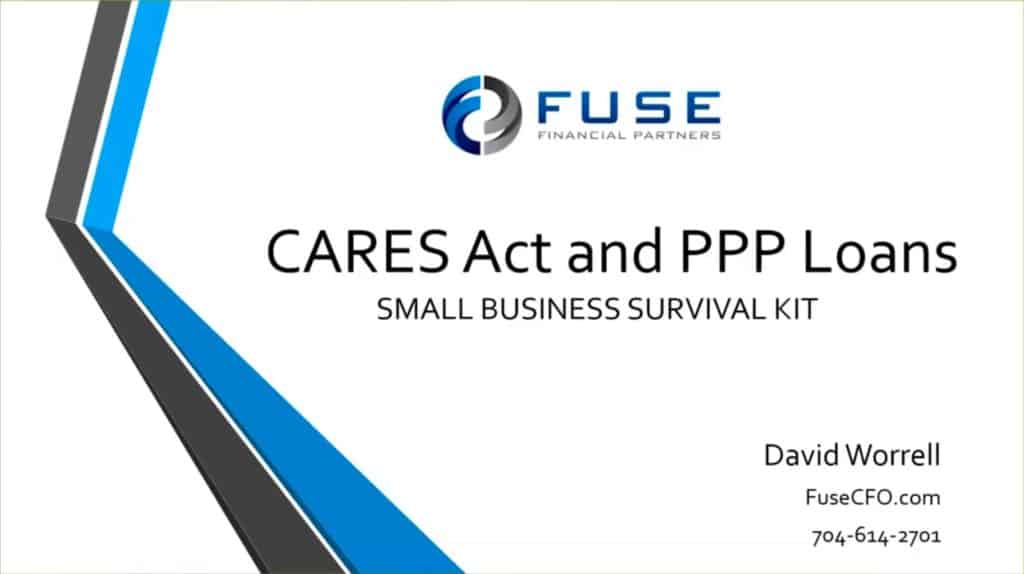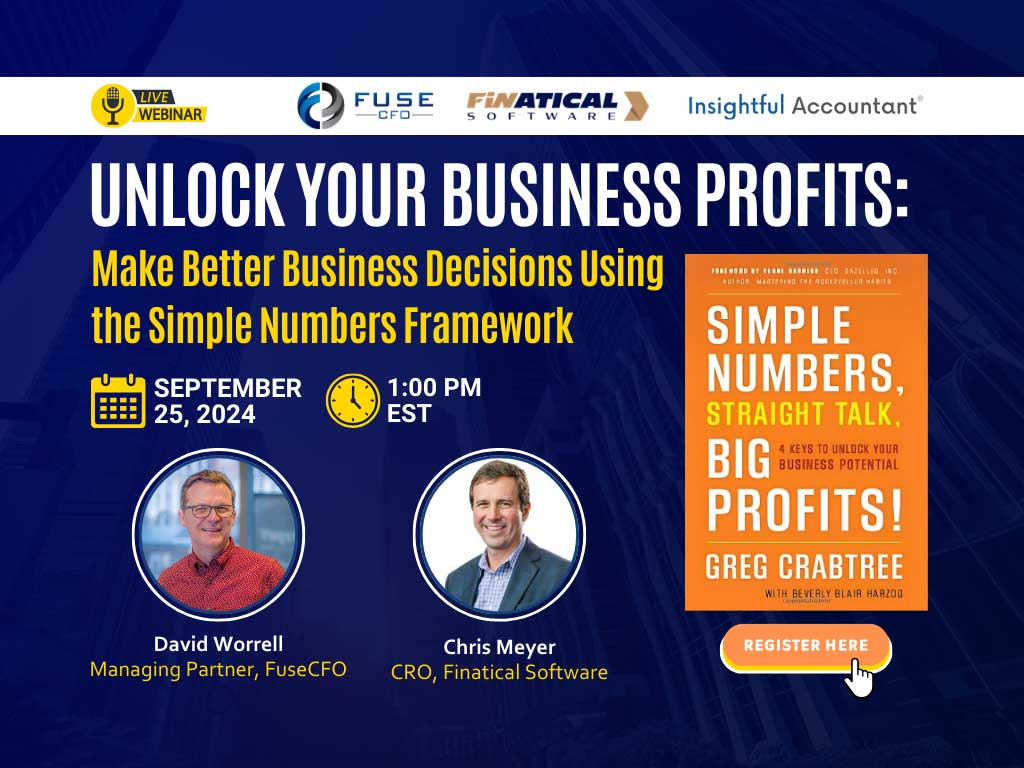Maximize Your PPP Loan Forgiveness: Keep 100% with These Tips
The best part of the Paycheck Protection Program is that 100% of the loan can be forgiven—if you follow the rules.
Although the Forgiveness will be judged by your local bank or lender, (and so could be slightly different), here’s detailed guidance for getting 100% PPP loan forgiveness.
[ALSO — be sure to watch the free video and get our PPP Forgiveness Calculator — an XL sheet with all the instructions.]

Remember what you borrowed
Remember, the loan you received was based on your average monthly payroll cost for 2019. You should have received 2.5 times that amount. That means you received about 10 weeks of payroll, to help cover just eight weeks of payroll expenses.
The funds from the PPP (Paycheck Protection Program) can be used for the following purposes:
- Payroll—salaries, wages, tips, commissions, all paid time off, retirement plan matching, and health benefits (but not QSEHRA)
- Mortgage interest—for mortgage loans started before February 15, 2020
- Rent—for lease lease agreements made before February 15, 2020
- Utilities—if service began before February 15, 2020
- BUT… Do NOT count the payroll tax that the employer pays to the federal government (FICA and FUTA)
All expenses that fall under those categories are eligible for forgiveness. The following conditions will also apply:
1. Eight Weeks Of Coverage
Eligible expenses are those that are incurred over eight weeks, starting from the day the first payment was made by your lender. This is not necessarily the date on which you signed your PPP loan agreement.
Depending on your payroll schedule, you may want to adjust the timing of your payroll date to accommodate as many payroll cycles as possible.
For example, if your PPP loan gets deposited in your bank account on April 15, you could only use the funds on expenses incurred during the eight weeks following April 15, which ends on June 10. If you have a payroll scheduled for June 15, we suggest you pay it on or before the 10th to be safe.
2. The 75/25 rule
At least 75% of your loan must be used for payroll costs. Payments to independent contractors cannot be included in the payroll costs. But all compensation counts, including tips, commissions, mileage reimbursement, and more. Whatever you pay your employees (cash compensation) counts toward the 75%. And of course, you can pay employees MORE than 75% of the total.
3. Staffing Requirements
You must maintain the number of employees you had on payroll prior to the Covid crisis. Fortunately, there’s some flexibility for calculating this.
Here is the calculation you can use to determine if you’ve met this requirement:
First, determine the average number of full-time equivalent employees you had for:
- The 8-week period following your initial loan disbursement, (A)
- February 15, 2019 to June 30, 2019, (B1)
- and January 1, 2020, to February 29, 2020. (B2)
Take A and divide that by B1. Do the same with B2. Take the largest number you obtain. If you’re a seasonal employer, you must divide by B1.
- If you get a number equal to or larger than 1, you successfully maintain your headcount and meet this requirement.
- If you get a number smaller than 1, you did not maintain your headcount and your forgivable expenses will be reduced proportionately.
4. Pay Requirements
You must keep paying at least 75% of the total wages for all employees.
This requirement will be individually assessed for every employee who did not receive more than $100,000 in annualized pay in 2019.
If the employee’s pay over the 8 weeks is less than 75% of the pay they received during the most recent quarter in which they were employed, the eligible amount for forgiveness will be reduced by the difference between their current pay and 75% of the original pay.
5. Rehiring Grace Period
You have until June 30 to “remedy” any of the shortfalls under #3 or #4.
You can rehire any staff who were laid off or put on leave and reinstate any pay that was decreased by more than 25% to meet the requirements for forgiveness. You have until June 30th to do so.
According to the latest guidance from SBA (Q&A #40), all you have to do is OFFER the furloughed employee their job back. If they decline to return to work, you are still considered to have remedied the FTE shortfall. (Strange but true. Also, the employee may inadvertently disqualify himself from Unemployment Insurance by declining your offer!)
PPP Loan Forgiveness For Self-Employed Individuals
If you are self-employed, your loan will follow different rules.
You may use the PPP loan to replace lost income due to the impacts of COVID-19. However, you are not entitled to use the full amount to replace pay. Only 8 weeks’ worth of your 2019 net profit will be eligible for forgiveness. Since you could have borrowed more than 10 weeks of income, you will either have some leftover or have to show how you used the rest for qualified expenses.
If you have mortgage interest, rent, or utilities expenses, you must have claimed or be entitled to claim a deduction for those expenses on your 2019 Form 1040 Schedule C to claim them for forgiveness.
For example, if you worked in an office space in 2019 and did not have a home office, you could not have claimed a deduction on your home mortgage interest. Even if you are currently working at home now, you are not eligible to claim home mortgage interest payments for forgiveness.
After Eight Weeks: Applying For PPP Loan Forgiveness
Applications for loan forgiveness will be processed by your lender. They’ll provide you with instructions on where to apply
After you submit your application for forgiveness, your lender is required by law to provide you with a response within 60 days.
Recordkeeping And Required Documents
These are the required documents you will need to collect to provide your PPP forgiveness application. Your lender may have additional requirements.
- Documents verifying the number of full-time equivalent employees on payroll and their pay rates, for the periods used to verify you met the staffing and pay requirements:
- Payroll reports from your payroll provider
- Payroll tax filings (Form 941)
- Income, payroll, and unemployment insurance filings from your state
- Documents verifying any retirement and health insurance contributions
- Documents verifying your eligible interest, rent, and utility payments (canceled checks, payment receipts, account statements)
If you are a sole proprietor, you can have eight weeks of the loan forgiven as a replacement for lost profit. But you’ll need to provide documentation for the remaining two weeks’ worth of cash flow, proving you spent it on mortgage interest, rent, lease, and utility payments.
Good recordkeeping and bookkeeping will be critical for getting your loan forgiven—you’ll need to keep track of eligible expenses and their accompanying documentation over the eight weeks. Your lender will likely require these documents in digital format, so take the time to scan any paper documents and keep backups of your digital records.
If you don’t have a reliable bookkeeping solution in place, Bench can do your bookkeeping for you, all online. Learn more.
What if I’m NOT approved for PPP Loan Forgiveness?
Your lender may allow you to provide additional documentation so they can reevaluate your request.
Otherwise, your outstanding balance will continue to accrue interest at 1%, for the remainder of the 2 years.
There is no prepayment penalty. You can pay off the outstanding balance at any time with no additional fees.
Strategies to Avoid Personal Guarantees on Loans
Avoiding personal guarantees can significantly alleviate financial risks associated with obtaining loans, making the borrowing process more appealing and less daunting. By structuring your financing arrangements to minimize or eliminate personal liability, businesses can safeguard personal assets and maintain financial flexibility.
FAQs
Can I prepay my rent or mortgage?
No, prepayment is not an allowed use of the PPP and any pre-paid rent will not count toward PPP Loan Forgiveness.
What counts as mortgage interest?
Any interest paid on a mortgage on property used for business purposes is an eligible expense that the PPP can be used for and qualifies for forgiveness.
Acceptable examples include:
- Mortgage interest on a warehouse you own to store business equipment
- Auto loan interest on a car you own to make business deliveries
How is eight weeks of net profit from 2019 calculated?
Your net profit that was reported on your Form 1040 Schedule C is multiplied by 8/52.


